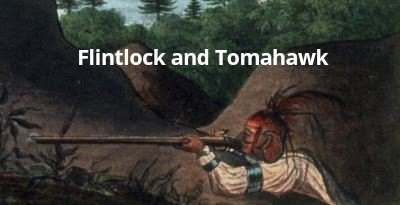Moses Hazen was in charge of the Rangers at Sainte-Foy and was severely wounded in the thigh. Here's the Seven Years War biographical details from the Canadian dictionary of National Biography
http://www.biographi.ca/en/bio/hazen_moses_5E.html
Moses Hazen enlisted in an American colonial unit in 1755 and, according to the historian Francis Parkman, served that year under Lieutenant-Colonel Robert Monckton* at Fort Beauséjour (near Sackville, N.B.). In 1756 he was at Lac Saint-Sacrement (Lake George, N.Y.). Out of the army the following year, he shipped to Halifax provisions and supplies for the projected British attack on Louisbourg, Île Royale (Cape Breton Island). On 7 April 1758 he was commissioned first lieutenant in John McCurdy’s company of Major Robert Rogers*’s rangers, and he served under Brigadier-General James Wolfe* at the capture of Louisbourg. Wintering at Fort Frederick (Saint John, N.B.), and having succeeded in January 1759 to command of McCurdy’s company, Hazen led it the following month on a raid to Sainte-Anne-du-Pays-Bas (Fredericton, N.B.), burning the settlement and taking prisoners, among them Joseph Godin*, dit Bellefontaine, dit Beauséjour, who had been a thorn in the British side; the raid earned Hazen a captaincy.
In 1759 Hazen’s company was included in the expedition to Quebec, and he transferred to that front Rogers’s form of brutal partisan warfare, boldly volunteering himself and his men for numerous expeditions into the countryside around Quebec. He was on one such operation when the battle of the Plains of Abraham was fought on 13 September. As the British waited out the winter of 1759–60 within the walls of Quebec, Hazen’s daring sorties impressed Brigadier-General James Murray*. Badly wounded in the thigh at the battle of Sainte-Foy in April 1760, Hazen was eventually obliged to give up his ranger company. On 21 Feb. 1761, with the recommendation of Murray, who attributed to him “so much still Bravery and good Conduct as would Justly Entitle him to Every military Reward he Could ask or Demand,” Hazen was allowed to purchase, for 800 guineas, a lieutenant’s commission in the 44th Foot. From 1761 to 1763 his regiment performed garrison duty at Montreal, and when it was reduced to nine companies in 1763 he retired on half pay.
http://www.biographi.ca/en/bio/hazen_moses_5E.html
Moses Hazen enlisted in an American colonial unit in 1755 and, according to the historian Francis Parkman, served that year under Lieutenant-Colonel Robert Monckton* at Fort Beauséjour (near Sackville, N.B.). In 1756 he was at Lac Saint-Sacrement (Lake George, N.Y.). Out of the army the following year, he shipped to Halifax provisions and supplies for the projected British attack on Louisbourg, Île Royale (Cape Breton Island). On 7 April 1758 he was commissioned first lieutenant in John McCurdy’s company of Major Robert Rogers*’s rangers, and he served under Brigadier-General James Wolfe* at the capture of Louisbourg. Wintering at Fort Frederick (Saint John, N.B.), and having succeeded in January 1759 to command of McCurdy’s company, Hazen led it the following month on a raid to Sainte-Anne-du-Pays-Bas (Fredericton, N.B.), burning the settlement and taking prisoners, among them Joseph Godin*, dit Bellefontaine, dit Beauséjour, who had been a thorn in the British side; the raid earned Hazen a captaincy.
In 1759 Hazen’s company was included in the expedition to Quebec, and he transferred to that front Rogers’s form of brutal partisan warfare, boldly volunteering himself and his men for numerous expeditions into the countryside around Quebec. He was on one such operation when the battle of the Plains of Abraham was fought on 13 September. As the British waited out the winter of 1759–60 within the walls of Quebec, Hazen’s daring sorties impressed Brigadier-General James Murray*. Badly wounded in the thigh at the battle of Sainte-Foy in April 1760, Hazen was eventually obliged to give up his ranger company. On 21 Feb. 1761, with the recommendation of Murray, who attributed to him “so much still Bravery and good Conduct as would Justly Entitle him to Every military Reward he Could ask or Demand,” Hazen was allowed to purchase, for 800 guineas, a lieutenant’s commission in the 44th Foot. From 1761 to 1763 his regiment performed garrison duty at Montreal, and when it was reduced to nine companies in 1763 he retired on half pay.




It is striking to what degree Rogers' Rangers served as an incubator for outstanding leaders in the American Revolution: Moses Hazen, John Stark, Joseph Cilley, Israel Putnam...
ReplyDelete